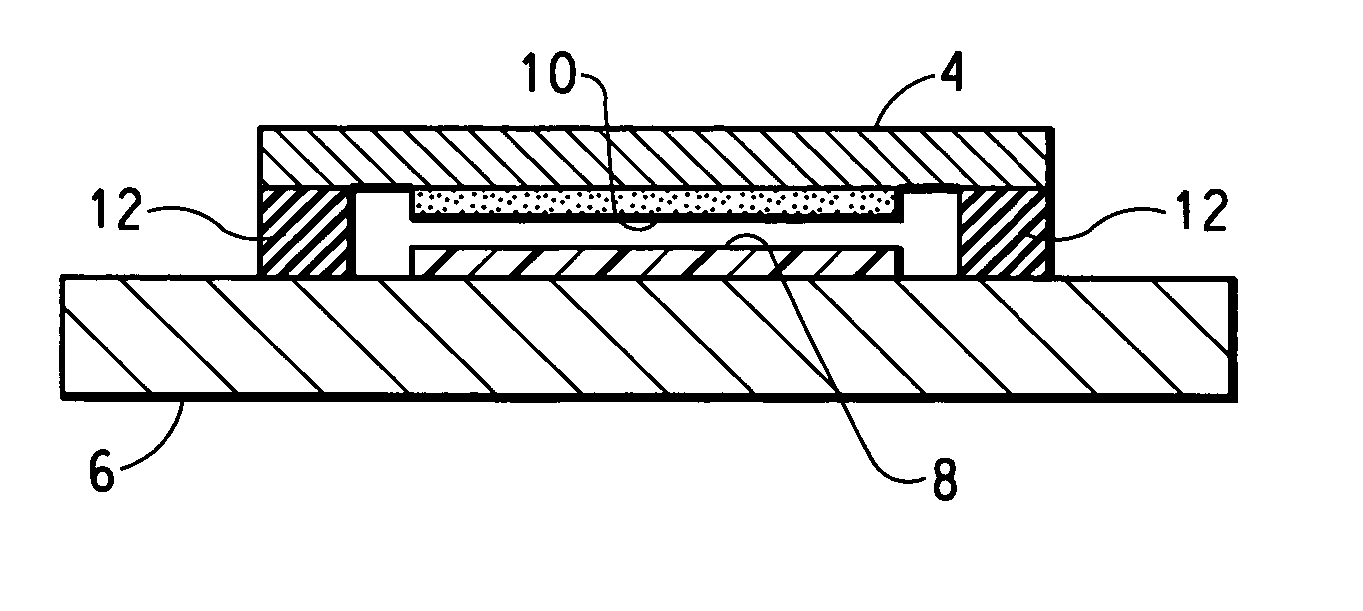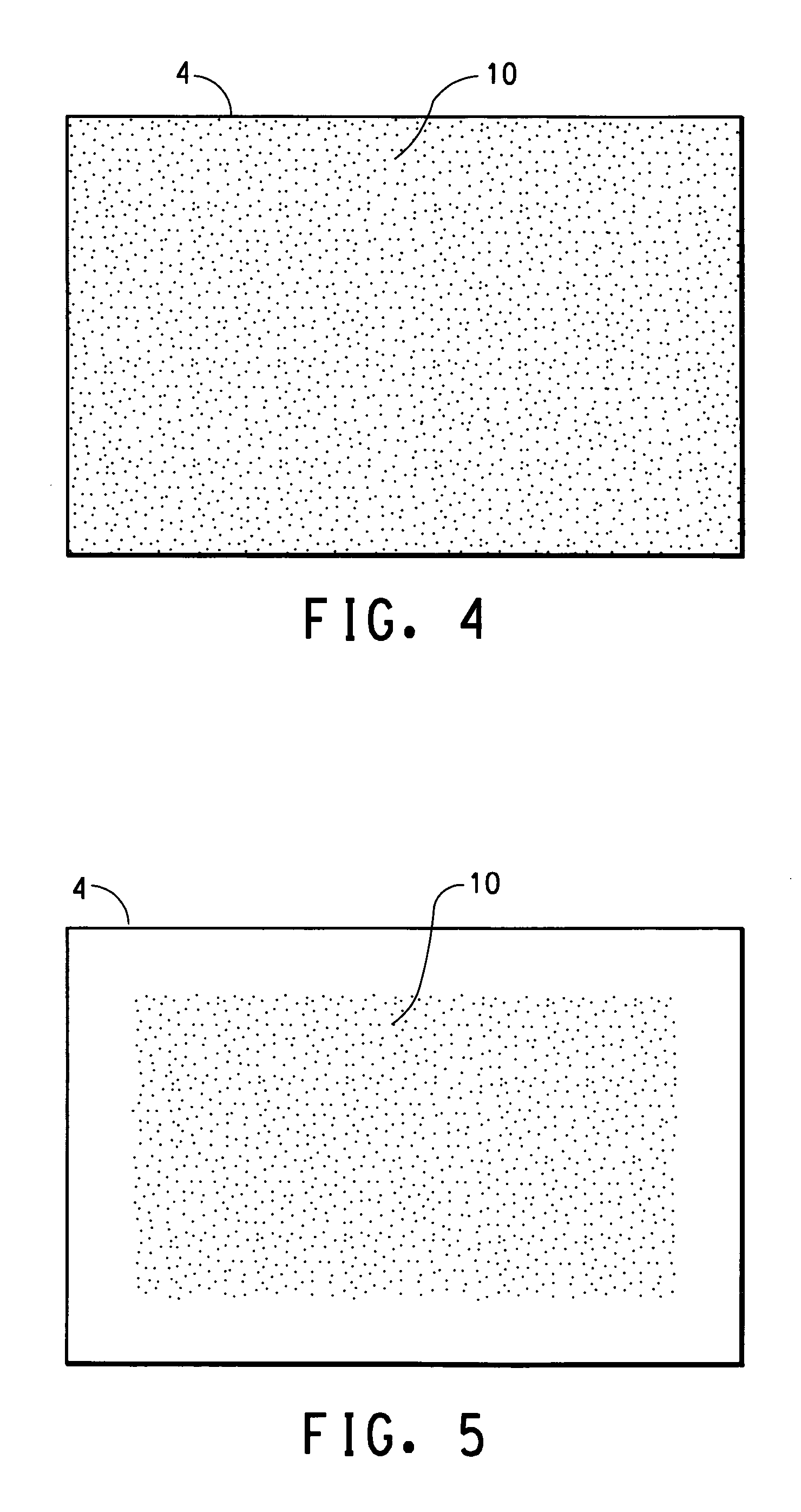Method for adhering getter material to a surface for use in electronic devices
a technology of electronic devices and getter materials, which is applied in the direction of other chemical processes, natural mineral layered products, lighting and heating apparatus, etc., can solve the problems of low work function metals, low work function properties, and damage to electronic organic devices
- Summary
- Abstract
- Description
- Claims
- Application Information
AI Technical Summary
Benefits of technology
Problems solved by technology
Method used
Image
Examples
example 1
[0093] This example illustrates the present invention applying the getter composition. The getter composition was a liquid dispersion of particles of a zeolite-based molecular sieve and glass frit in an organic liquid medium. The dispersion comprised the following ingredients by wt % of total dispersion:
Inorganic componentsZeolite-based molecular sieve (13x-typed powder)54.1Glass frit5.4Organic componentssurfactant1.1ethylcellulose resin1.0Texanol solvent (ester alcohol)38.4%
[0094] The composition of the glass frit in wt % (dry) was as follows:
SiO2Al2O3B2O3CaOZnOBi2O37.112.138.380.5312.0369.82
example 2
[0095] This example illustrates making and performance of method of applying the getter composition of the present invention. A slurry of 0.75 tablets of unfired DESIWAFER 300 / 20 zeolite-clay material in 1 ml of water was dispersed in water to make a 200 ml dispersion. The dispersion was applied to a cavity on a glass lid plate in 0.5 ml aliquots by hand using a syringe. The getter was solidified by placing in a vacuum oven for 1 hour at 70° C. to remove substantially all of the water. After solidification, the getter layers were then activated and densified by heating the glass lid plates for 2 hours at 500° C. In an environment having less than 10 ppm H2O and O2, the plates with self-attached getter layers were then each assembled into an enclosure holding a PLED device. Control polymer light emitting diode devices (PLEDS) were assembled into an enclosure under the same conditions, except that the getter layer was replaced by a fired DESIWAFER tablet (Sud-Chemie) attached to a pla...
PUM
| Property | Measurement | Unit |
|---|---|---|
| Temperature | aaaaa | aaaaa |
| Temperature | aaaaa | aaaaa |
| Temperature | aaaaa | aaaaa |
Abstract
Description
Claims
Application Information
 Login to View More
Login to View More - Generate Ideas
- Intellectual Property
- Life Sciences
- Materials
- Tech Scout
- Unparalleled Data Quality
- Higher Quality Content
- 60% Fewer Hallucinations
Browse by: Latest US Patents, China's latest patents, Technical Efficacy Thesaurus, Application Domain, Technology Topic, Popular Technical Reports.
© 2025 PatSnap. All rights reserved.Legal|Privacy policy|Modern Slavery Act Transparency Statement|Sitemap|About US| Contact US: help@patsnap.com



